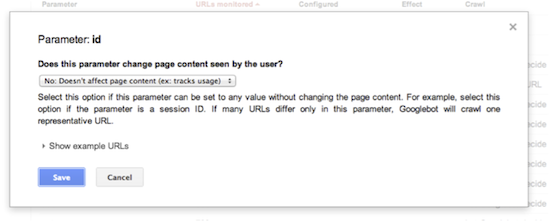 Asking a nontechnical person to understand technical SEO is like asking an infant to understand Pig Latin.
Asking a nontechnical person to understand technical SEO is like asking an infant to understand Pig Latin.
Many of us didn’t understand the difference between client side and server side, HTML and CSS, hell, even coding and programming when we started our careers. But in this tightly integrated industry, you must take the time to learn it.
Fixing even the smallest technical issue could have more benefits than even the best links you build. While you may not be able to personally fix these issues, knowing what to look for and how to fix it – and having a developer handy to implement it – is critical.
So for all my fellow nontechnical people, here are the basics behind what you need to look out for with technical SEO.
Redirects and Status Codes
Looks Like
Whenever someone accesses your page, that page will send a response to the web server saying what’s happening. There are a lot or status codes, and Moz’s “Response Codes Explained With Pictures” does a way great job explaining each.
Meaning
The basics:
- 200: Hey Google, all good. Page loads just fine.
- 301: Hey Google, I actually permanently relocated that information over here.
- 302: Hey Google, this page is over here for the time being, but it won’t stay like that forever.
- 404: Hey Google, this page doesn’t exist. Nice try.
What to Use
Screaming Frog will pull a whole list of your URLs and let you know the status code associated with each. I also have our support team pull a list of all URLs on our database and cross-reference so I’m not missing anything.
Keep in Mind
Make sure the front-end and the back-end match. If you’re permanently redirecting, the status code needs to be a 301 and not a 302. If not, then you aren’t passing any value from Page A to Page B, and Page B will probably never rank.
Additionally, don’t redirect everything back to the home page. It should be done on a 1-1 basis.
If the page really doesn’t exist, the status code needs to throw up 404, not 200. That’s called a soft 404, and it creates confusing signals between Google and your web server.
Canonicals Are Cool
Looks Like
In the source code of Page A, you have < link rel=”canonical” href=”http://www.example.com/page-b”>.
Meaning
Hey Google, I know you’re on Page A, but that content is actually best read on Page B.
When to Use
Duplicate or near duplicate content, like:
- Duplicate home page URLs
- www.example.com and www.example.com/default.aspx
- Duplicate paths to the same page
- www.example.com/news/page-a/ and www.example.com/press/page-a
Keep in Mind
Your canonicaled page is the end all, be all. It’s the page that you want indexed by search engines, so that URL also needs to be in your sitemap and internal linking structure. In the example above, users and crawlers will still get to Page A, but Page B is getting all the action.
URLs Aren’t Case Sensitive
Looks Like
http://www.example.com/angry-erin-attacks and http://www.example.com/Angry-Erin-Attacks
Meaning
Hey Google, I know you think you’re on two different URLs, but it’s really just the same content.
What to do
Your developers should be able to implement a site-wide canonical pointing all uppercase URLs to their lowercase counterpoints. That way, duplicate content is fixed and your users aren’t having an interrupted experience.
Keep in mind
I like having all my URLs lowercase since it’s few people rarely capitalized URLs when they’re typing them into a search bar anyway. Plus it keeps in cleaner. You could 301 these, too, but I prefer to limit the number of redirects to keep things as simple as possible.
URL Parameters
Looks Like
http://www.example.com/angry-erin?color=green&size=15&id=12345&print=1
Meaning
Whenever you see a “?” in a URL, that’s the start of your URL parameters.
Some parameters give more information about what’s on the page making the content change, like signifying a size or a color on an ecommerce site. Other parameters don’t change the content at all and are just used for tracking purposes, like saying where the referral came from or this is the print version of the page.
For example:
https://www.searchenginewatch.com/article/2299970/Securing-the-Future-of-SEO-Global-Brands-5-Not-Provided-Solutions?utm_content=buffera3518&utm_source=buffer&utm_medium=twitter&utm_campaign=Buffer
In the above URL, SEW has additional parameters so it knows how many people are going to that article from Twitter. If you remove everything after the “?”, the page content will stay the same.
http://www.example.com/catalog/sc-gear/women-39-s-kira-2-0-triclimate.html?variationId=A5L&variationName=BOREALIS%20BLUE
In the above URL, everything after the “?” are additional filters of the same product, in this case, the color. Removing everything after the “?” will still bring you to the jacket, but not in the color that you want.
What to do

URL parameters can cause duplicate content, so you’ll need to keep an eye out on what’s necessary for the page content and what Google can ignore. In Google Webmaster Tools, you can tell Google how it should read your parameters, but you should implement some canonicals too.
Summary
Even with a basic understanding of what to look for in technical SEO can get you far. So many people today focus too heavily on off-page SEO, but if a site is technically flawed, it won’t matter how many links you have or how good your content is.
For more reading, check out these resources:
 Asking a nontechnical person to understand
Asking a nontechnical person to understand 